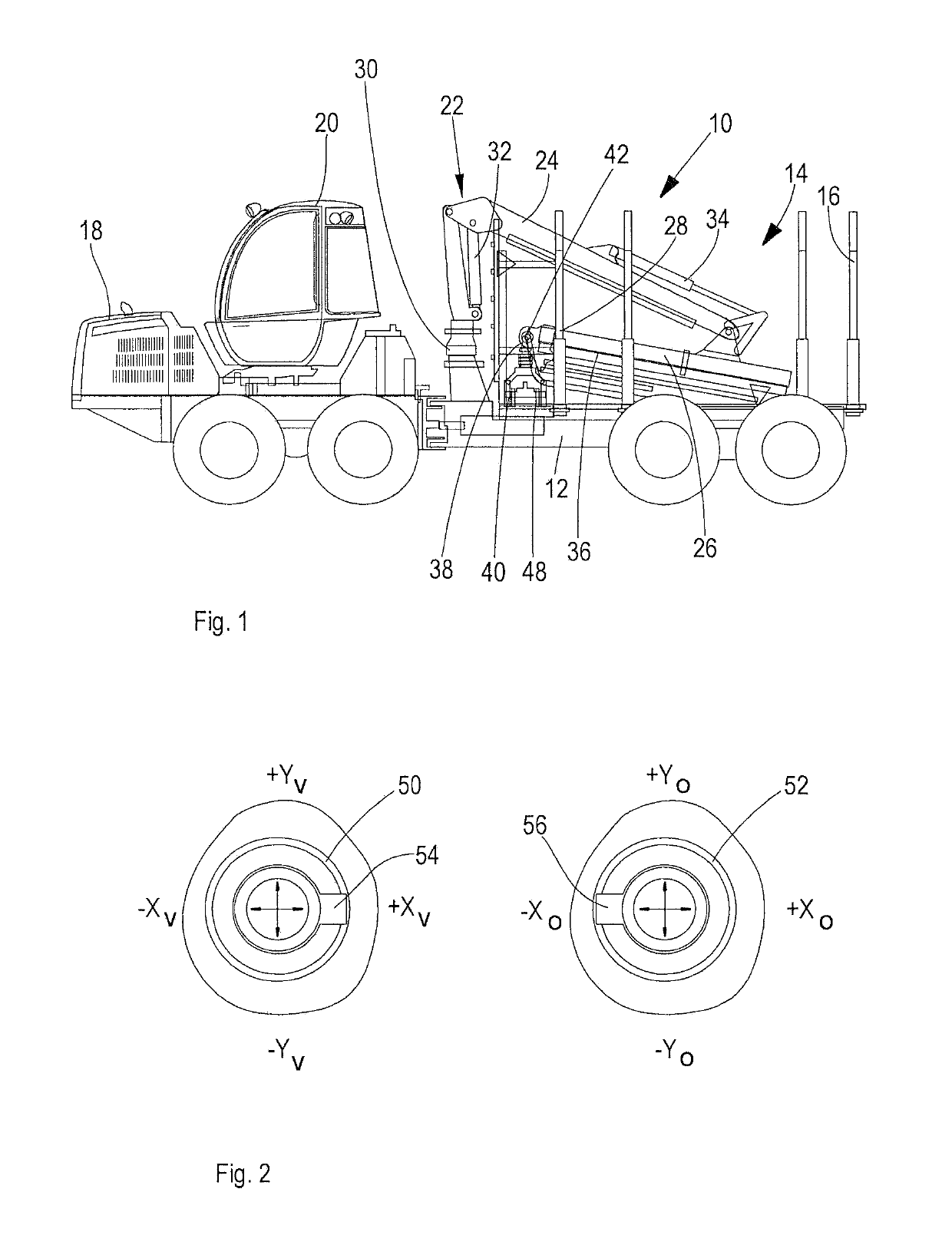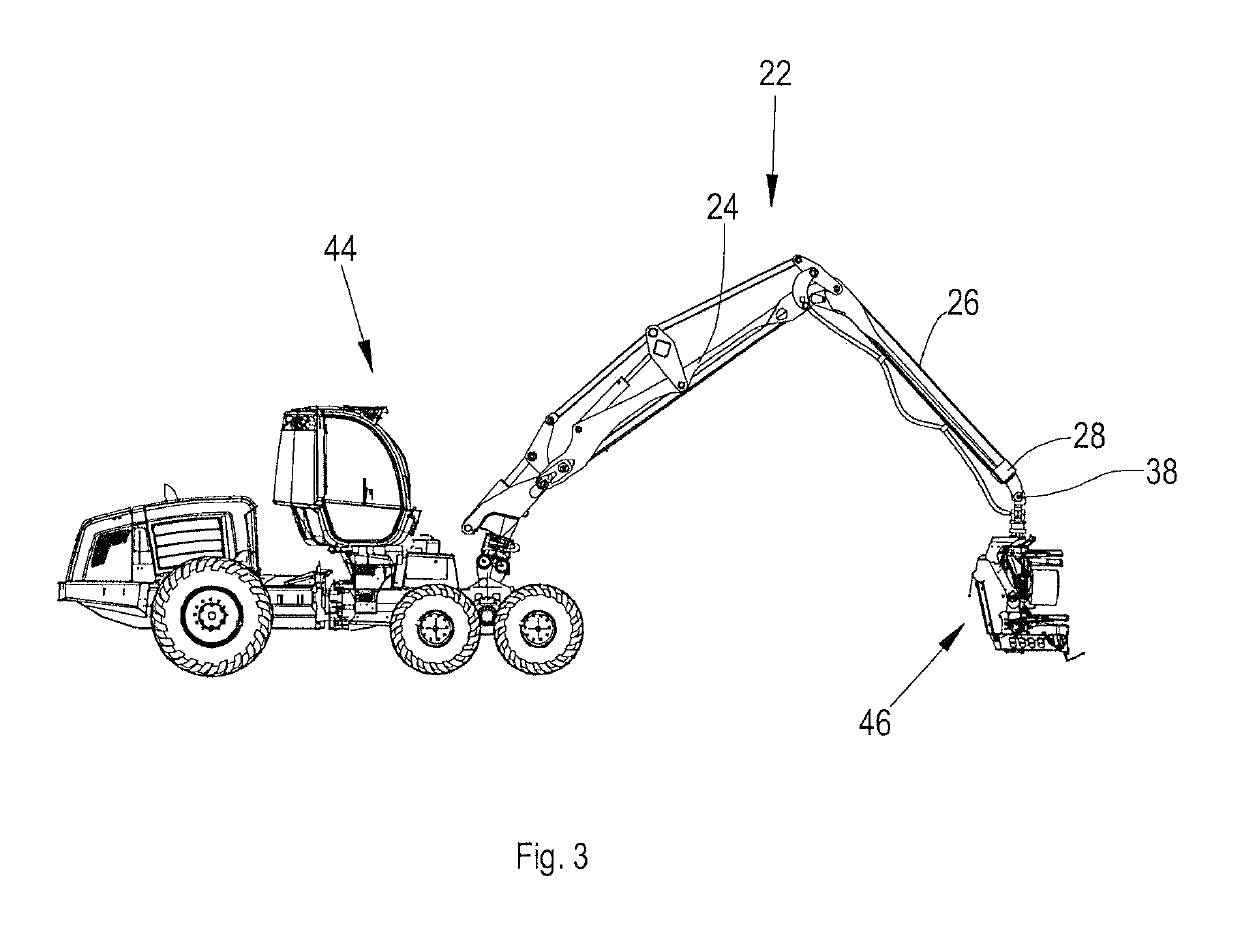Method and system for controlling the crane of a working machine by using boom tip control
a technology of working machine and control method, which is applied in the direction of load-engaging elements, construction, agriculture, etc., can solve the problems of not being able to move the crane head in the desired way, and the difficulty of the crane moving more than the implementation
- Summary
- Abstract
- Description
- Claims
- Application Information
AI Technical Summary
Benefits of technology
Problems solved by technology
Method used
Image
Examples
Embodiment Construction
[0030]The method and the system according to the disclosure can be applied in a variety of working machines equipped with a crane, for example in various excavators and forest machines. In forest machines, the method can be well utilized in, for example, forwarders 10 such as that shown in FIG. 1, and harvesters 44 such as that shown in FIG. 3. Most typically, the actuators used for moving different booms of a crane in a working machine are hydraulic cylinders, but in principle they could also be other actuators with linear movements, such as pneumatic cylinders or spindle motors. Furthermore, for moving e.g. a traverser that rotates the crane horizontally, it is also possible to apply actuators generating a rotary motion, such as hydraulic or electric motors. For controlling all these actuators, however, it is possible to use a control system equipped with a programmable data processing unit and controlling the movements of the crane by means of control functions generated by contr...
PUM
 Login to View More
Login to View More Abstract
Description
Claims
Application Information
 Login to View More
Login to View More - R&D
- Intellectual Property
- Life Sciences
- Materials
- Tech Scout
- Unparalleled Data Quality
- Higher Quality Content
- 60% Fewer Hallucinations
Browse by: Latest US Patents, China's latest patents, Technical Efficacy Thesaurus, Application Domain, Technology Topic, Popular Technical Reports.
© 2025 PatSnap. All rights reserved.Legal|Privacy policy|Modern Slavery Act Transparency Statement|Sitemap|About US| Contact US: help@patsnap.com


